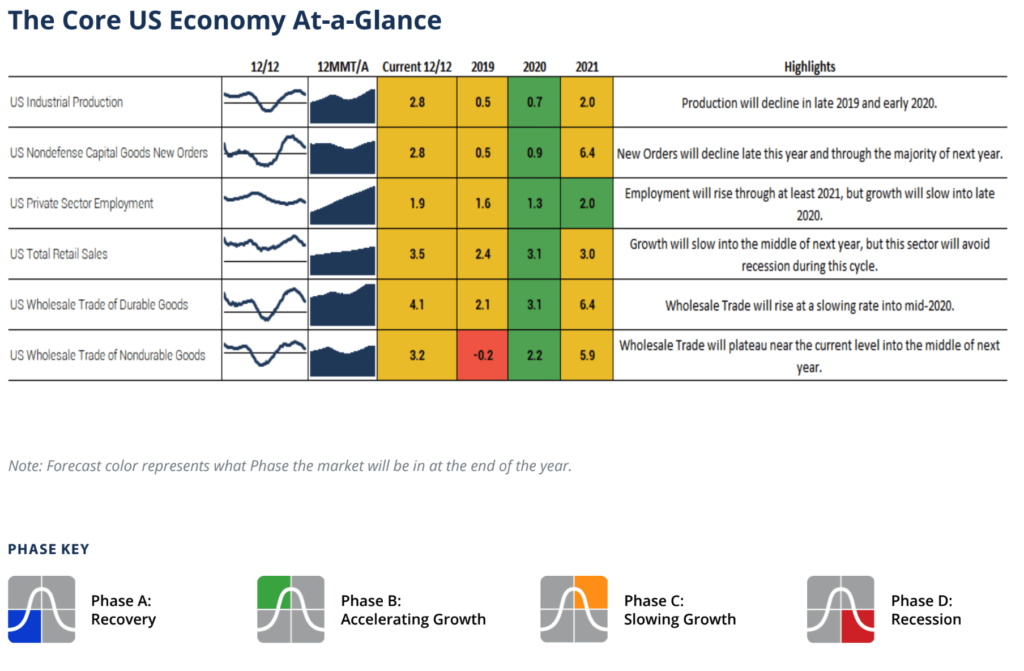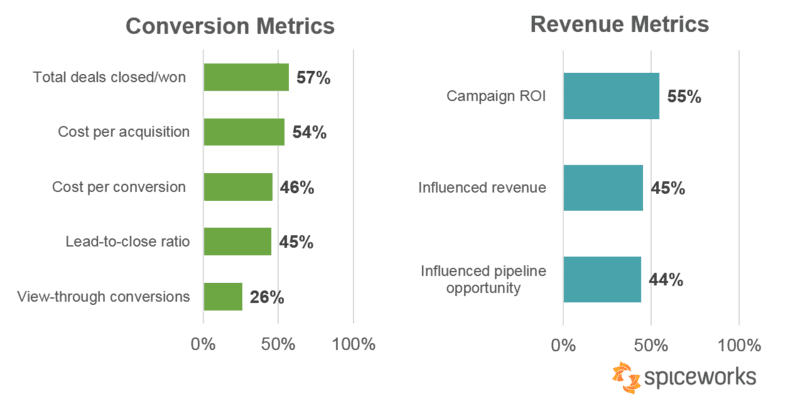2020 is Approaching: Time to Outplan Your Competition
Author Alan Lakein once said, “Planning is bringing the future into the present so that you can do something about it now.” As a B2B marketing leader, you know full well the importance of being proactive when it comes to planning your next campaigns or initiatives to support a new offering or brand extension.
Chances are, you and your team are already discussing and setting marketing budgets for 2020 based on revenue projections and customer demand trends. Just know that if you wait for sales to slow before you react, you’re too late. If you wait for the competition to enter a territory you “own,” you’re too late. January 2020 is less than three months away; the time to plan for it is now.
Underscoring this advice is the ITR Economics September 2019 Trends Report: “As macroeconomic business cycle decline develops further, pessimism will likely rise. Do not become preoccupied with the near term; instead, look ahead to the next period of business cycle rise and craft a plan to maximize growth.”
Furthermore, depending on your industry, there may be slowdowns by events usually outside your control like this ITR Economics prediction: “Industrial production will decline mildly through the remainder of this year and into early 2020. Production will then recover and rise through the remainder of 2020 and all of 2021.”
Yes, economists are sometimes compared to weather forecasters in that they’re not always right. We can’t wave a magic wand to make the economy behave the way we’d like, but we can exercise a great deal of control over our sales and marketing strategies and plans — and make our own “weather.”
Amid busy cycles, most company leaders are frantically placing orders and maintaining business as usual. During a slowdown, however, use the time to raise your position in the marketplace with smartly-planned marketing strategies that tightly align with sales goals and opportunities.

Overall, total U.S. manufacturing production has been up from about 2.1 percent compared to last year, but ITR Economics still advises companies to keep costs low through the remainder of 2019 to be in a better position to invest in 2020. For fast-growing sectors such as medical equipment and supplies production, ITR is telling businesses to maintain adequate distribution channels through the remainder of 2019 to handle demand but cautions the industry will “experience a decline through the rest of 2020 and into mid-2021.”
Interestingly, while most Windmill Strategy clients are in business-to-business industries, it’s still a good idea for marketing leaders to keep tabs on retail sales metrics. In the U.S. strong retail sales are a measure of the overall economy, which affects firms in industries such as technology and manufacturing by encouraging further capital investments — and driving more growth. By tracking economic and marketplace trends, you’ll have more data to help you anticipate the future and create appropriate budgets in the thick of a roller-coaster economy.
Take Preemptive Measures With a Digital Marketing, Website Audit
But keep in mind, even if you curb your expenses during a downturn, and increase marketing investments when it rebounds, there are inexpensive measures you can stage now to help you outperform the competition once demand returns.
For example, a marketing audit is an inexpensive step that’ll help you measure and quantify what’s working and what’s not on your website, and digital strategy. Whether you perform the marketing audit internally or choose to hire a B2B digital agency, here are several items to check off on a digital marketing, website audit:
Digital Marketing Audit
- Is your sales strategy aligned with marketing tactics?
- Are you tracking the right KPIs to measure your current state?
- Are your KPIs tied to revenue?
- Are your key messages aligned across your sales and marketing functions?
- Are you engaging the right audience groups?
Website Audit
- Is the website fast and responsive?
- Does the website perform well on mobile devices?
- Is the site intuitive and easy to navigate (UX)?
- Is the site’s content optimized for search and attracting visitors (SEO)?
- Are visitors engaging with the site by downloading content, filling out forms and taking other actions?
- Are user flows and pathways optimized to maximize engagement?
- Are your website’s messages consistent and well understood? Are visitors taking action?
- Is the technical infrastructure of your website sound and up-to-date? This includes hosting, codebase, theme, plug-ins, modules, databases, e-commerce integrations and security.
Measure Both Traffic AND Revenue Metrics
As you create your 2020 marketing plans and budgets, be sure to use carefully selected KPIs to track and measure success. In today’s world of digital transformation, we are awash in powerful analytical tools that produce terabytes of data you can use to monitor marketing and business performance.
In a survey of 185 technology firms, Spiceworks found business leaders tend to value conversion metrics such as deals won, influenced revenue or cost per acquisition, over metrics preferred by marketers — lead numbers, engagement and contact form fills. The key, says Forrester, is to “Measure marketing’s contribution to revenue as a function of customer acquisition and installed base growth.” It’s less about click-through rates and shares and more about how your marketing strategy is affecting the bottom-line. Only “45 percent of marketing departments measure how much revenue they’re influencing, and nearly 30 percent of marketers said they ‘don’t know’ what percent of business revenue their marketing department is tasked with influencing,” says Spiceworks.

As marketing and business leaders plan for 2020, pay close attention to trend reports across multiple industries to help you anticipate demand and customer willingness to invest in products and services that will help grow their companies. Benchmark and measure the current state. How are your sales today? Moving up and to the right, or edging downward? What do the leading metrics look like? Are you measuring the right KPIs so that you can see any trends and proactively reorient them in the right direction? Marketers, are you tracking your efforts back to business revenue and aligning with sales so that your role in influencing the future revenue of the company is seen as an asset, rather than an expense in leaner times? (Your actions now can help you preclude those leaner times).
How to Outsmart Your Competition
If your firm is planning new strategies or investments for later in the year, or when growth picks up, what steps are you taking today to ensure that the proper planning and measurements are in place so that you can move quickly when the time is right? Planning now with an eye fixated on next year will help you react swiftly to just about anything. In the process, you’ll have more time to adjust your strategies and campaigns as well as budgets to help you outperform the competition. Finally, if you haven’t already, put steps in place to become one of the 45 percent of marketing departments that’s measuring how much revenue you’re influencing, and watch your success skyrocket.
Need help planning and creating 2020 marketing campaigns and strategies that deliver business results and outsmart your competition? Let’s Get to Work.


